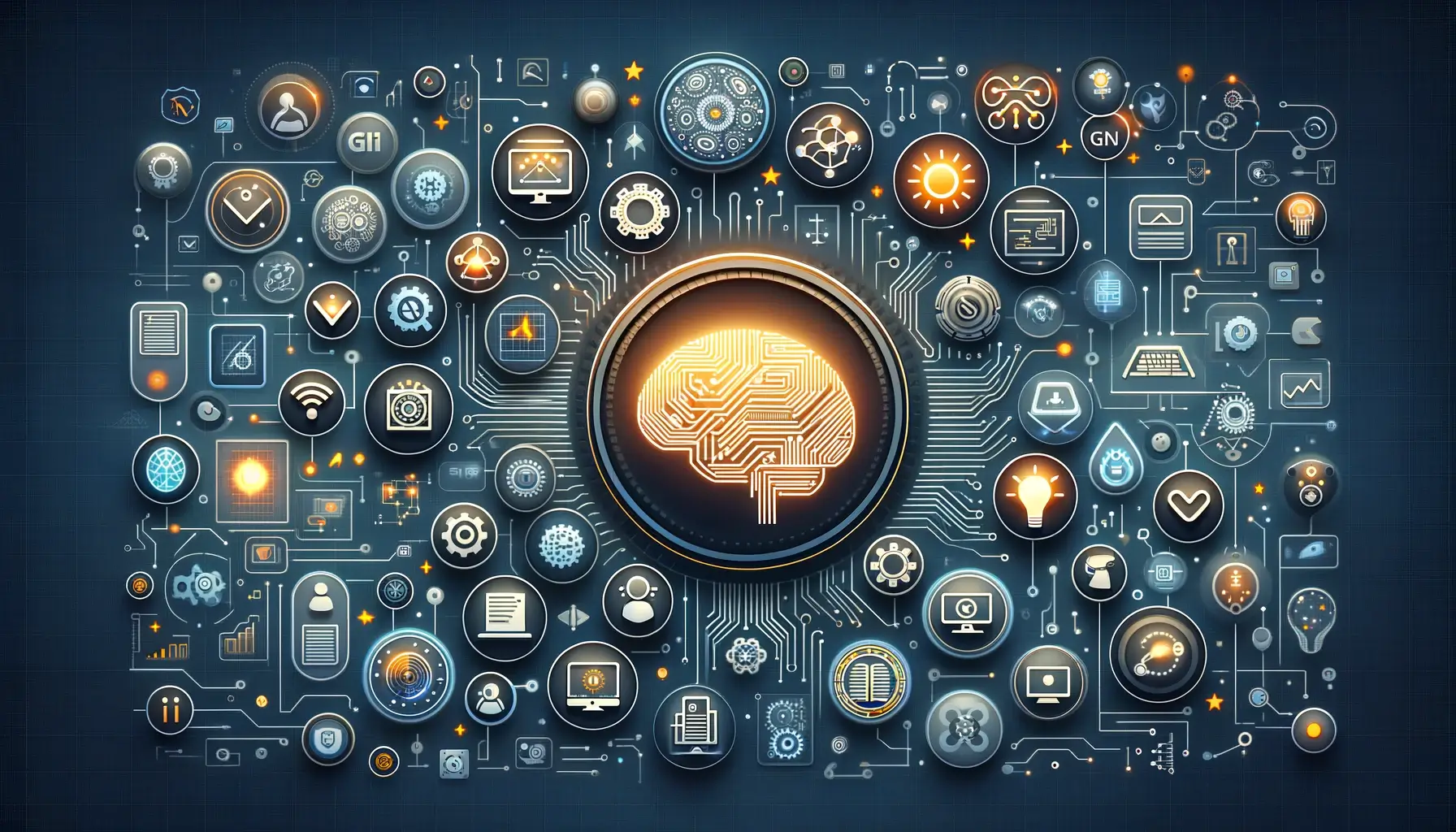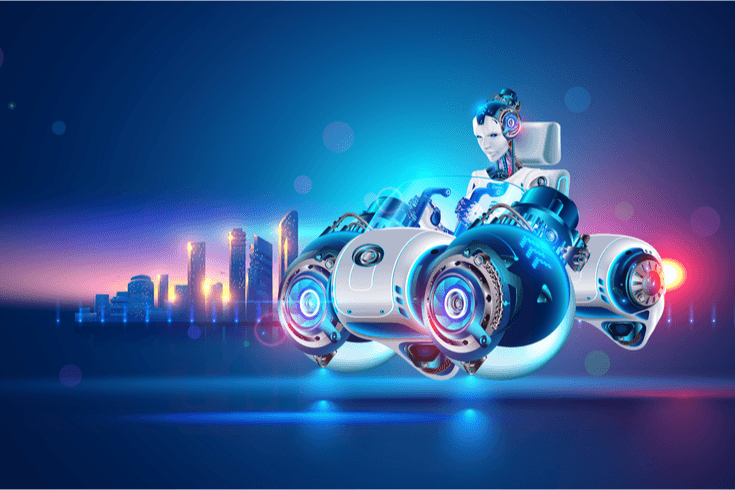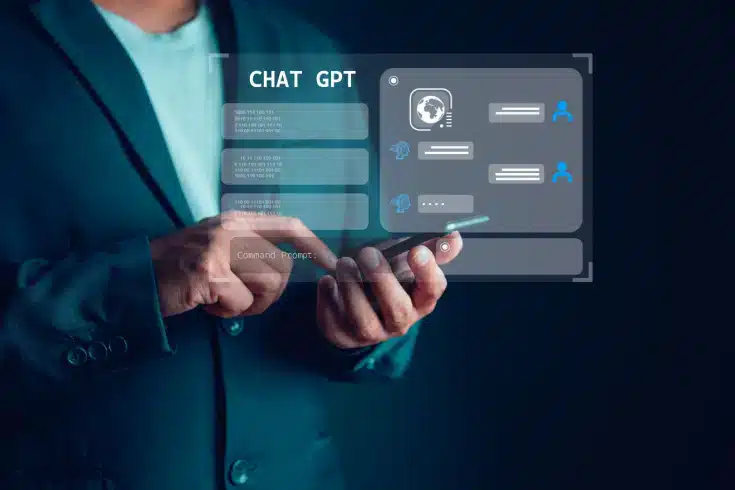Understanding Generative AI: Types, Benefits, and Applications Explained Clearly

What is Generative AI?
Generative AI is a technology that automatically creates various types of content such as text, images, program code, videos, and audio based on user instructions (prompts) and pre-learned data. A representative example is “ChatGPT,” released by OpenAI in November 2022. ChatGPT generates natural text that seems as if a human wrote it, making it applicable in various business scenarios. It is expected to significantly improve efficiency and reduce costs. The development of generative AI has rapidly advanced in recent years, attracting attention across many fields as new services are released daily worldwide.
Why Generative AI is Gaining Attention
Just as the invention of computers and the widespread use of the internet and mobile phones brought significant changes to people’s lives, AI is becoming an indispensable part of modern society. In particular, generative AI is developing to the extent that it could potentially replace human labor, raising significant social concerns and becoming an entity that cannot be ignored.
Differences Between Generative AI and Traditional AI
Traditional AI primarily “extracts” information that matches the prompt from the learning data and outputs the result. In contrast, generative AI “generates” new outputs based on the learning data. This personalityistic allows generative AI to create unique expressions and ideas without being constrained by the learning data. However, the quality of the output heavily depends on the user’s prompt engineering skills (the ability to input the optimal prompts to obtain the desired output from the AI).
Mechanism of Generative AI
The core technology supporting generative AI is “machine learning.” Machine learning is a series of techniques that discover and learn patterns and rules from large amounts of input data and classify and predict newly input data. In the development of generative AI, a learning method called “deep learning” is commonly used. Deep learning allows for the extraction of more layered features from the input data, enabling more complex and accurate task processing. Generally, among the foundational models generated through such machine learning, those adapted to more specific tasks are called “pre-trained models,” and those incorporated into products or services are collectively referred to as “generative AI.” In short, there are various types of generative AI depending on the content of the “specific tasks.”
Types of Generative AI
Below, we explain the main types of generative AI.
Text Generation AI
Text generation AI, represented by “ChatGPT” and “Bard,” incorporates large language models (LLM) such as “GPT-4” and “PaRM.” These large language models are adapted for handling natural language among foundational models and possess billions to hundreds of billions of parameters, enabling the generation of very natural text. This allows for a wide range of applications, such as creating meeting minutes, replying to emails, crafting advertising copy, and writing novels.
Image Generation AI
Image generation AI, represented by “Stable Diffusion” and “Midjourney,” generates new images from text or other images. Depending on the purpose and use, there are various types, such as text-to-image (t2i), where you input a textual description of the desired final image, and image-to-image (i2i), where the AI reconstructs a different image based on an input image.
Voice Generation AI
Voice generation AI generates new voice data when you input voice data. For example, by inputting and training on a large amount of voice data from a particular person or personality, the AI can read various texts in that voice. Additionally, it can adjust the tone to match specific emotions and read in multiple languages, making it useful in various scenarios such as narration and automated responses in call centers once the voice data is trained. Google’s “Text-to-Speech AI” is a well-known example.
Video Generation AI
Video generation AI is a technology where AI combines text and images to automatically generate new videos. “Sora,” announced by OpenAI in February 2024, generates videos from text. Unlike previous video generation AIs that could only create short videos of a few seconds, “Sora” can generate videos up to one minute long. It maintains consistency in personalitys and settings across multiple scenes and accurately reflects physical laws to reproduce natural movements, making it one of the most notable generative AIs currently.
3D Model Generation AI
3D model generation AI is a technology where AI automatically generates 3D models from text or images. It is expected to be utilized in industries such as game personality and object creation, and CG content production for anime and movies, making it one of the most promising types of generative AI. “LumaAI,” “Tripo,” and “Meshy” are representative examples.
Benefits of Utilizing Generative AI
Generative AI is continuously emerging, and its application is anticipated across various industries.
By leveraging generative AI, not only can we expect significant improvements in operational efficiency and cost reduction, but it also offers insights that can lead to the discovery of new ideas and patterns. This represents a substantial advantage over traditional AI in terms of practical application.
Business Applications of Generative AI
Specifically, generative AI can be utilized in the following business scenarios:
Automation and Assistance in Customer Support
Customer support tasks such as replying to emails and handling phone calls are time-consuming and labor-intensive daily operations. However, these tasks are well-suited for generative AI. By using text-generating AI to understand customer inquiries and create appropriate responses, and combining it with voice-generating AI, it is possible to provide 24/7 automated phone support. Many companies have already implemented generative AI in these operations.
Generating Ideas and Drafts for Ad Copy and Web Articles
As mentioned earlier, leveraging the feature of generative AI to produce new outputs is highly effective for generating ideas and drafts in content creation, such as ad copy and web articles. By specifying product features, target audience, word count, and other parameters in the prompt, it is possible to generate more suitable outputs. Additionally, generative AI can produce a large number of ideas faster than humans, significantly contributing to productivity improvement.
Supporting Data Analysis and Automatic Report Generation
Generative AI, capable of processing large volumes of data quickly, can identify patterns and trends that humans might overlook. It can be used for data analysis, forecasting, and creating reports based on these analyses and predictions. By specifying output formats and other requirements, it is possible to customize the format according to needs, which is another advantage.
Important Considerations for Using Generative AI
As mentioned above, generative AI offers significant benefits, but there are also numerous points that require careful attention to ensure proper use.
AI Hallucinations
Generative AI provides responses based on probabilistic and statistical analysis of its training data, which means it can sometimes output false information (commonly referred to as “hallucinations”).
Additionally, some generative AI systems have limitations on the period of data they can access, resulting in responses that may not reflect the most current information.
Therefore, when using generative AI outputs in business operations, it is essential to include processes for human quality checks and verification.
Security Aspects
Another critical consideration for companies using generative AI is security.
Some generative AI systems may use the input data for machine learning purposes, which could lead to irreversible consequences if personal information or corporate secrets are input.
Therefore, it is crucial to thoroughly review the terms of service regarding the handling of input data.
Legal Regulations
In recent years, there has been active discussion about the legal regulations concerning generative AI, particularly focusing on the Japanese Copyright Act and the Japanese Act on the Protection of Personal Information. Additionally, some industries and sectors have established their own AI ethics guidelines. As part of corporate compliance, it is important to stay informed about these legal regulations and the trends in AI ethics.
Azure OpenAI Service: Recommended for Secure AI Utilization
In this regard, Microsoft Azure’s “Azure OpenAI Service” is the only service that allows the use of OpenAI’s AI services (such as text, code, and image generation) on the Microsoft Azure platform. A key feature is that the data you input is not used for machine learning, and you can also leverage Microsoft Azure’s security features, ensuring a high level of security.
Moreover, while many major generative AI services are based overseas, Azure OpenAI Service can be contracted under Japanese law with the Tokyo District Court as the exclusive jurisdiction. This makes it highly recommended for its predictability in legal risks.
Summary: While Generative AI Can Improve Efficiency, Risk Management is Essential
The rapidly emerging generative AI services, if utilized effectively, can significantly enhance operational efficiency and reduce costs.
However, to leverage generative AI services effectively, it is crucial to accurately understand their risks and carefully consider which features and specifications can mitigate these risks in relation to the intended operations.
Especially for companies, it is important to establish internal guidelines, inform employees, and conduct training. When introducing generative AI services into business operations, it is advisable to compare and evaluate each service from these multifaceted perspectives.
Category: IT





















